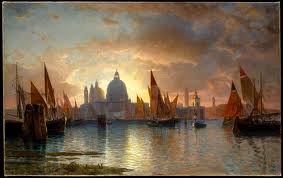Creative Ways to Sell Your Paintings Online
Now that you have decided that you want to expand your horizons when it comes to promoting and selling your artwork through the internet, the next challenge for you is on how you’ll be able to attract people to visit your page or website and check your paintings out. Here are some creative ideas that you can use when selling your paintings online.

Create a name and a logo for your website
I suggest that you should take this one seriously. Think of a domain that will carry your name and your work and which will also serve as your trademark. It has to be unique and interesting and very much related to your style and kind of work. Make it as personal as possible to create a character and personality to your website.
Write something about your website and what you can offer
Writing a short history and description about your site will make it more interesting. Say something about how you started and why you decided to put it up. Elaborate on your art and your love for your craft. Show how passionate you are in what you do and that it reflects in your work. This way, you’ll be able to imbibe to your readers that they are not just looking at a piece of decoration but an art worth buying.
Post well-photographed and high definition photos of your art
Remember that your website is your portfolio online. You can show your artwork to anyone and anywhere in the world. They will not be able to see the actual painting so a nice photograph of it will allow them to appreciate the details. You can hire a professional photographer or you can do it yourself provided that you are able to capture the most important details and that it will come out like you are looking at the original painting.
Use videos to advertise and to tell something about you and your artwork
Create fun videos of yourself making your paintings. A time lapsed video is a great idea wherein you video yourself creating a masterpiece from start to finish. Videos tend to create more traffic in websites because watching is more fun than reading alone. You can also share your videos on YouTube or Vimeo and create links to other social networks like Facebook and Twitter to your page to draw visitors to your website.
Write interesting blogs
You can attract a variety of possible clients by writing interesting reads about art in your website. You can write about history of art, about your favourite artists or teach art techniques through your blog. This will make you website more fun and worth visiting again.













